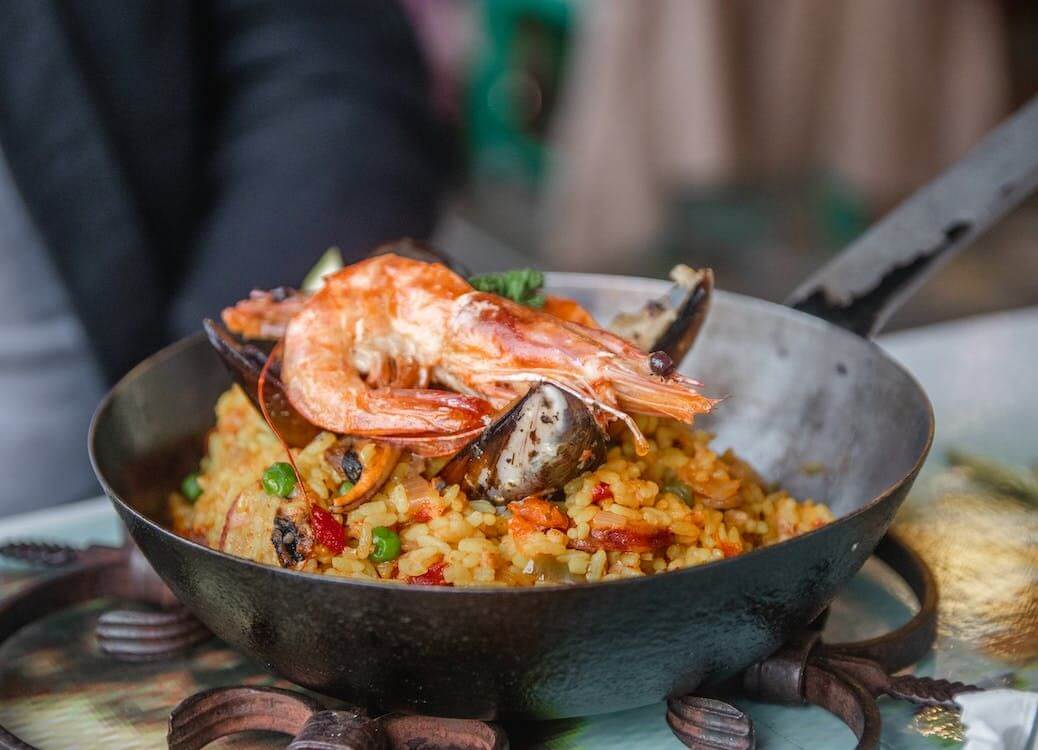The Kitchen Misconception Of Cooking Alcohol Out

Today, let’s explore a culinary myth that’s been simmering in kitchens around the world: the belief that alcohol completely cooks out of food. It’s a widely held notion, stemming from the understanding that alcohol has a lower boiling point (173° F / 78.5° C) compared to water (212° F / 100° C). Logic dictates that if the cooking temperature exceeds 78.5° C, alcohol should evaporate entirely, right? Well, it’s time to stir the pot and uncover the truth.

In 1992, researchers from the U.S. Department of Agriculture, the University of Idaho, and Washington State University donned their aprons to scientifically test this theory. They didn’t just simmer over this question; they thoroughly cooked it, using various recipes and cooking methods, including simmering, baking, flaming, and even overnight refrigeration. Their findings? The reality is more complex than the myth suggests. They discovered that alcohol retention in cooked dishes varied widely from 4% to 85%, debunking the idea that alcohol always fully evaporates during cooking.
Let’s dish out the details. When alcohol was added to boiling liquid and removed from heat shortly after, a whopping 85% of the alcohol stayed behind. Flaming, a technique often used for dramatic effect in dishes like Bananas Foster, retained about 75% of the alcohol. Even when dishes were left overnight without heat, around 70% of the alcohol content hung around. Baked dishes, where the mixture wasn’t stirred, held onto about 45% of their alcohol after 25 minutes in the oven.
As for stirred mixtures, the numbers tell an interesting story:
- After 15 minutes of cooking, 40% of the alcohol remained.
- This dropped to 35% at the 30-minute mark.
- An hour of simmering reduced it to 25%.
- 1.5 hours saw a decrease to 20%.
- Two hours brought it down to 10%.
- And finally, 2.5 hours of cooking left only 5% alcohol.
Now, you might slice this data to conclude that extended cooking times will eventually eliminate all the alcohol. Practically speaking, that’s somewhat accurate. But for those who need to avoid alcohol entirely, like recovering alcoholics, it’s crucial to understand that this isn’t strictly true. The persistence of alcohol in cooked dishes is due to its bond with water, forming an azeotrope. This mixture keeps the alcohol-to-water ratio consistent during boiling, meaning some alcohol remains as long as there’s moisture in the dish.
Here’s a tasty tidbit: alcohol isn’t just added to fondue for flavor. It serves a practical purpose by lowering the boiling point of the cheese, which helps prevent curdling. This is just another example of how alcohol plays a nuanced role in cooking, beyond just imparting flavor.
The Pros of Alcohol in Cooking
A significant pro of using alcohol in cooking is its ability to enhance flavor and texture. Alcohol can help dissolve and release flavor compounds in foods that are not soluble in water or oil, enriching the overall taste of a dish. It’s particularly effective in deglazing pans to capture the flavorful bits after sautéing. In dishes like stews and sauces, alcohol can add complexity and depth, while in baking, it contributes to a moist and tender texture.
A pro of cooking with alcohol is the creative versatility it offers. Chefs and home cooks alike use various alcoholic beverages, from wine and beer to spirits, to create an array of flavors and aromas. Each type of alcohol can bring a unique element to a dish, allowing for culinary experimentation and innovation.
A less-known aspect of cooking with alcohol is the azeotrope effect, where alcohol binds with water, making it impossible to completely cook out the alcohol without removing all moisture. This scientific phenomenon is crucial for cooks to understand, especially when preparing dishes for individuals who must avoid alcohol entirely. It underscores the importance of considering the final alcohol content in cooked dishes, regardless of the cooking duration or method.
Alcohol also plays a functional role in cooking, beyond flavor enhancement. For example, in fondue, alcohol lowers the boiling point of cheese, preventing curdling. This illustrates how alcohol can be used as a tool to achieve specific culinary results, a pro for those looking to refine their cooking techniques.
Safety Concerns for Specific Groups
On the downside, even though alcohol content reduces during cooking, it doesn’t completely evaporate. This poses a risk for certain individuals, such as recovering alcoholics, people with certain religious beliefs, or those with medical conditions prohibiting alcohol consumption. Even small amounts of alcohol can be problematic for these groups, making it essential to be mindful of the dishes they consume.
From a nutritional standpoint, cooking with alcohol can be a con. While it adds flavor, it also contributes additional calories without providing any essential nutrients. For those monitoring their calorie intake or seeking nutrient-dense meals, this could be a downside. However, the amount used in most recipes is generally small and may not significantly impact the overall nutritional value of the dish.
The method of cooking greatly influences how much alcohol remains in the food. Quick-cooking methods like flaming or adding alcohol to a dish right before serving result in higher alcohol retention. In contrast, long-simmering or baking allows more alcohol to evaporate. Understanding this can be a pro for cooks who want to control the alcohol content in their dishes, but a con for those unaware of how different cooking methods affect alcohol retention.
How To Cook Out Alcohol
Choosing the Right Alcohol for Your Dish
When selecting an alcohol for your dish, consider its flavor profile and how it complements your ingredients. For instance, a robust red wine works well in hearty stews, while a light white wine is ideal for seafood dishes. Remember, the quality of the alcohol can influence the final taste of your dish, so choose one that you’d enjoy drinking.
Adjusting Cooking Time and Method
To reduce the alcohol content, extend your cooking time. Simmering or stewing dishes with alcohol over low heat for a longer period allows more alcohol to evaporate. Conversely, if you prefer to retain some of the alcohol’s flavor without much of its potency, opt for shorter cooking times.
Balancing Flavors
Be mindful of the balance of flavors in your dish. Alcohol should enhance, not overpower, the other ingredients. Start with a smaller amount and taste as you cook, adjusting as necessary. This approach ensures that the alcohol complements rather than dominates the dish.
Alcohol Substitutes for Non-Alcoholic Cooking
If you’re cooking for those who avoid alcohol, consider non-alcoholic substitutes that mimic the flavor profile of the intended alcohol. For example, use non-alcoholic wine or grape juice in place of wine, or broth in place of beer. These alternatives can provide a similar depth of flavor without the alcohol content.
Safe Cooking Techniques
When using methods like flambéing, always exercise caution. Keep a lid nearby to smother flames if needed, and never pour alcohol directly from the bottle into a hot pan. Pre-measure the alcohol and add it carefully to prevent flare-ups, ensuring your safety in the kitchen.
Pairing Alcohol with Ingredients
Pairing the right alcohol with your ingredients can elevate your dish. For example, use beer in marinades for meat to tenderize it, or add a splash of brandy to desserts for a rich flavor. These pairings can enhance the natural flavors of your ingredients, adding a gourmet touch to your cooking.
Utilizing Alcohol in Marinades
Alcohol can be a great addition to marinades. Its ability to tenderize meat makes it a useful ingredient for tougher cuts. When marinating with alcohol, allow enough time for the flavors to infuse and the alcohol to tenderize the meat, but not so long that the alcohol flavor becomes overwhelming.
While it’s true that cooking reduces the alcohol content in food, it’s a gradual process, and complete evaporation isn’t guaranteed. Understanding this helps us appreciate the complexity behind seemingly simple cooking processes, reminding us that there’s often more than meets the eye (or taste buds) in the kitchen.







